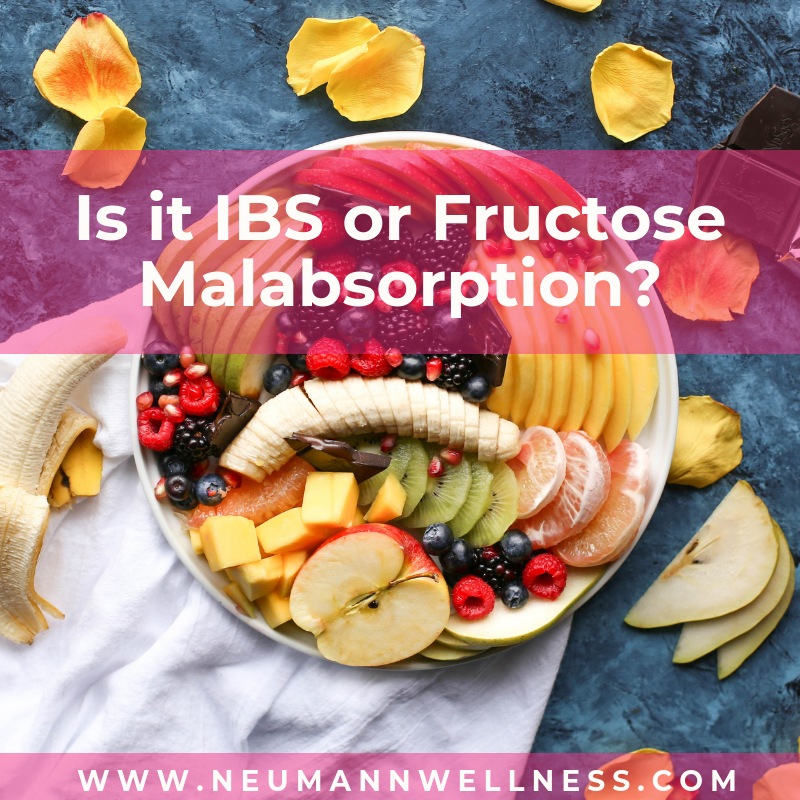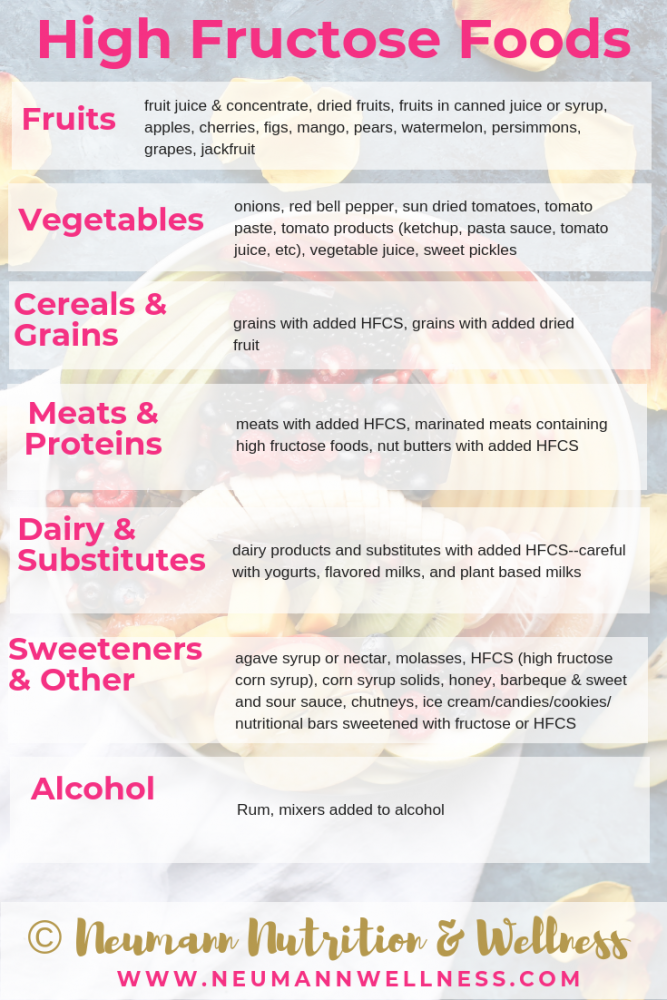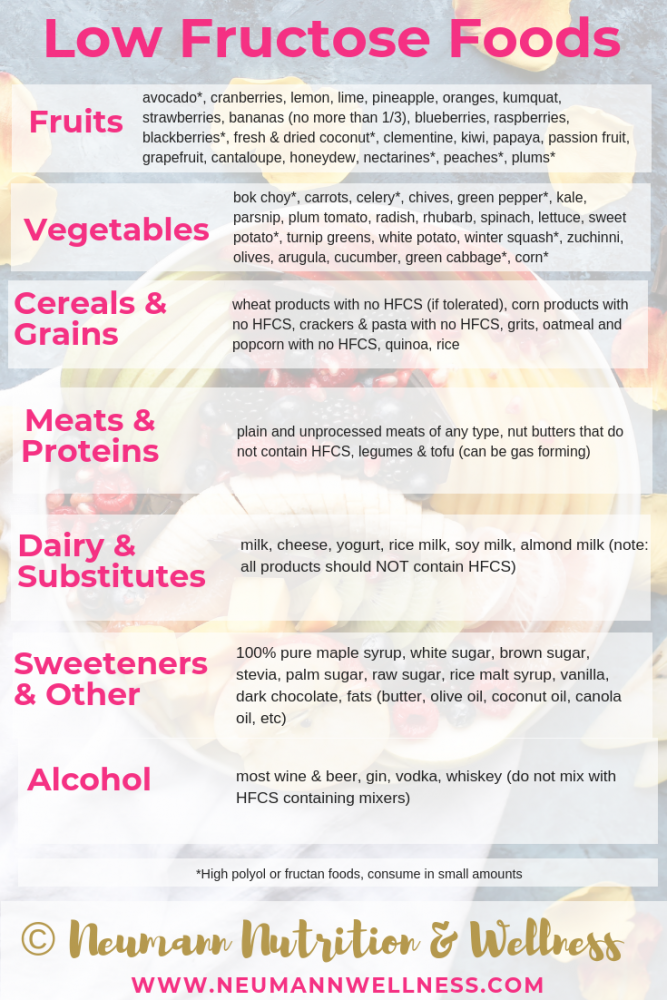Is it IBS or Fructose Malabsorption?

Introduction
If you’ve struggled with bloating, stomach pain, gas and diarrhea with no resolution in sight it might be worth investigating Fructose Malabsorption as your main culprit.
These same presenting symptoms can often be diagnosed as Irritable Bowel Syndrome (IBS).
You can distinguish Fructose Malabsorption from IBS by getting a diagnosis by your doctor with use of hydrogen and/or methane breath tests. These tests can recognize unabsorbed fructose in your gut and help you get to the bottom of what is causing your digestive distress once and for all.
If you’re not able to get the breath test, you can see if your symptoms improve by eliminating fructose from your diet.
What Foods Contain Fructose?
Fructose is a monosaccharide found in three main forms in the diet: free fructose (present in fruits and honey), from the disaccharide sucrose (sugar) and as fructans in oligosaccharide form (a chain of fructose sugar units) which is present in some vegetables and wheat.
Fructose is found in high fructose corn syrup (HFCS) which is an additive in many commercial foods such as:
- soft drinks
- ketchup & condiments
- jams, jellies
- yogurt & flavored milks
- commercial breads
- commercial salad dressings
- cereals & breakfast foods
- crackers
- maple syrup (those that are not 100%).
How is Fructose Absorbed?
Humans have a limited capacity for fructose absorption.
On top of that, our fructose intake has tripled since the early 1900s– mainly due to the added fructose in commercially packaged foods.
While fructose is often associated with fruit, most of our daily fructose intake comes from non-fruit foods as mentioned above.
Fructose absorption requires a glucose molecule for every fructose molecule. Therefore, if a fructose molecule is leftover without a glucose molecule partner it cannot be absorbed in this particular mechanism.
This may explain why sucrose (contains equal amounts of glucose and fructose) can be well tolerated in moderation.
Berries, citrus and some melons can be tolerated in smaller amounts as they have less fructose than glucose.
Fructose is absorbed more completely in the presence of glucose and less completely in the presence of sugar alcohols.
Sugar alcohols are also known as Polyols and include naturally occurring sorbitol and mannitol. Polyols can be found added to sugar-free foods and some supplements in the form of xylitol.
What Foods Do I Need to Limit and Include?
Start your diet by eliminating added fructose in your diet from products with ingredients that list fructose, crystalline fructose, HFCS, corn syrup solids, agave and honey.
Avoid sugar-free products as these contain sorbitol or xylitol.
Keep in mind the amount of fructose found in 1 can of soda is the same amount found in 2 apples or 2 oz of honey.
Consider medications or supplements that contain added fructose as an ingredient. You may have heard suggestions to add glucose (dextrose) to fructose foods to improve tolerance.
So far research has not proven the effectiveness of this approach. Adding extra sugar to foods could do more harm than good in the long run.
In general, fruits will contain more fructose than vegetables. 1 serving of fruit is 1/2 cup and you will want to limit those to twice daily. Choose lower fructose fruits. A serving of vegetables is a 1/2 cup or 1 cup leafy. Eat up to 3-5 servings a day as tolerated.


Additional Suggestions
Once you start implementing your low fructose diet, you can track your food-related symptoms by downloading the Cara app to your phone: https://www.cara-app.com/
Additionally, if you aren’t sure about the fructose content of a particular food you can search the USDA database by typing in “fructose” and the name of your food in the”nutrients list” search. Choose foods less than 5g fructose per serving: https://ndb.nal.usda.gov/ndb/search
Keep in mind your tolerance may depend on the amount of combined fructose from foods you eat at one time. Also consider the interplay of polyols and fructans if you continue to have symptoms.
If you’re a woman looking to jump start your digestive health journey, then I’ve got you covered! To learn more about my 12 week IBS Rehab Program, get started here!
